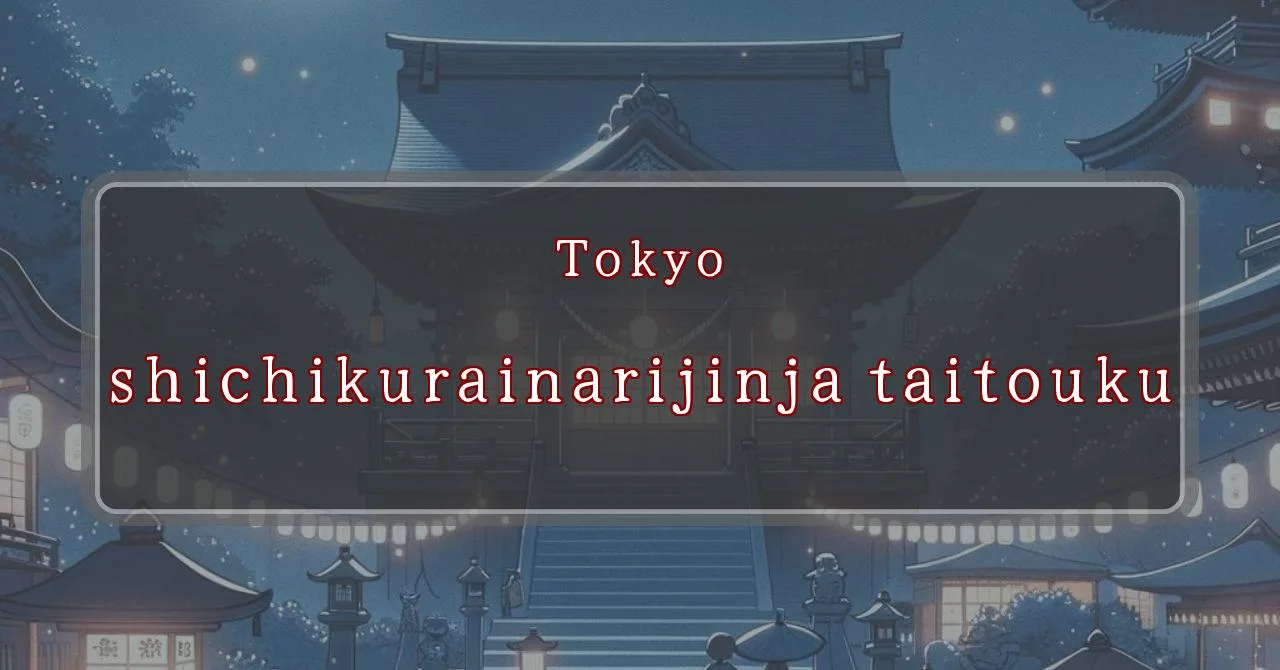Enchanting Shrine Festival in Tokyo’s Hidden Gem
Basic Information
Discover the Enchanting Seven倉稲荷 Shrine Festival in Tokyo’s Vibrant District.
- Phone Number: Unavailable
- Access: 3-minute walk from Nezu Station on the Chiyoda Line
- Festival Days: September 20th, 2024
Main Events and Attractions of the Festival
Immerse yourself in the vibrant festivities of the Nanakura Inari Shrine Festival, a spectacle of colors and traditions.
Mikoshi Procession
Witness the grandeur of the Mikoshi Procession, where the sacred mikoshi (portable shrine) is carried through the streets by devotees. This solemn and awe-inspiring spectacle is a highlight of the festival, attracting throngs of spectators.
Yamaboko Parade
Marvel at the Yamaboko Parade, a procession of elaborately decorated floats adorned with intricate carvings, vibrant colors, and traditional music. These floats, carried by local residents, create a captivating spectacle that embodies the festival’s joyous spirit.
Shishimai Dance
Be captivated by the mesmerizing Shishimai Dance, a traditional lion dance performed by skilled dancers. The lion’s movements, accompanied by rhythmic drumming and chanting, are believed to bring good luck and ward off evil spirits, creating an enchanting atmosphere.
Blessings and Deities
Discover the divine blessings and deities revered at Nanakura Inari Shrine, a sanctuary steeped in history and spirituality.
Origin and History
Unravel the captivating history and origins of Nanakura Inari Shrine, a tale of resilience and devotion.
- Establishment: The shrine’s origins date back to the early Edo period, initially located in Asakusa, where it served as the guardian deity of seven rice storehouses.
- Relocation: In the Meiji era, the shrine was relocated to its current site in Ikebukuro, continuing to be a beacon of faith and reverence.
Tips and Notes for Visitors
Ensure a fulfilling and respectful visit to Nanakura Inari Shrine with these helpful tips and notes.
- Etiquette: Observe proper etiquette by bowing before entering the shrine’s main hall and clapping your hands twice before praying.
- Photography: Photography is generally permitted within the shrine grounds, but it’s essential to be respectful and avoid taking pictures during ceremonies or rituals.
- Hours: The shrine is typically open from sunrise to sunset, but it’s advisable to check the official website or contact the shrine office for specific hours during special events or holidays.
Parking Information
Plan your visit to Nanakura Inari Shrine with this essential parking information.
- Parking Availability: Unfortunately, there is no dedicated parking lot at the shrine. However, there are several nearby public parking facilities and street parking options within walking distance.
- Fees: Parking fees may apply at public parking facilities, so it’s a good idea to carry some change or check the payment options beforehand.
- Public Transportation: Consider utilizing public transportation, as the shrine is conveniently accessible via the Chiyoda Line, with the Nezu Station just a short walk away.
Popular Stalls and Food Carts in Recent Years
| Type of Stall | Description |
|---|---|
| Takoyaki | A staple at Japanese festivals. Characterized by a crispy outside and a creamy inside. |
| Jaga Butter | A simple yet popular snack of hot potatoes lavishly topped with melted butter. |
| Baby Castella | Small castella cakes, sweet and fluffy treats enjoyed by children and adults alike. |
| Grilled Ayu with Salt | Fresh ayu fish grilled whole with salt, a savory taste of Japanese summer. |
| Shaapin | A unique gourmet item influenced by foreign cuisine, with a chewy skin wrapping the filling. |
| Okonomiyaki | A Japanese grilled dish where you often choose your own ingredients for a personalized flavor. |
| Cotton Candy | A fluffy, sweet snack that’s extremely popular with children. |
| Chocolate Banana | A banana coated in chocolate, a fun and visually appealing dessert. |
| Kushiyaki | Various types of ingredients skewered and grilled, an easy-to-enjoy snack. |
| Yakisoba | Fried noodles mixed with a special sauce, a fast food favorite in Japan. |



